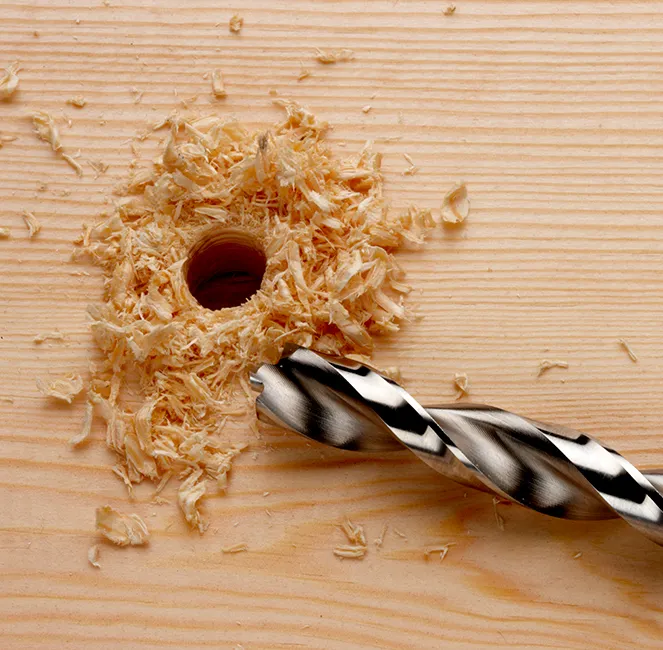Rivet Nut Drill Size Chart
Rivet nut is a crucial fastener for achieving strong threaded connections in thin plate structures. The installation quality of a rivet nut largely depends on the precise matching of the drill hole size and the specification of the rivet nut. To assist engineers and assemblers in quickly finding the appropriate hole diameter standards, the Rivmate expert team has compiled a complete Rivet Nut Drill Size Chart. This size chart, based on actual tests and international standards, is designed to provide users with reliable selection criteria.
| Nut OD | Thread (Metric/Inch) | Body Diameter (mm) | Recommended Drill Size | Grip Range (mm) |
| M3 | M3 × 0.5 | 4.8 | 5.0 mm | 0.5 – 1.5 |
| M4 | M4 × 0.7 | 6.1 | 6.3 mm | 0.5 – 2.0 |
| M5 | M5 × 0.8 | 7.1 | 7.3 mm | 0.5 – 3.0 |
| M6 | M6 × 1.0 | 8.9 | 9.0 mm | 0.5 – 3.5 |
| M8 | M8 × 1.25 | 11.0 | 11.1 mm | 0.5 – 4.5 |
| M10 | M10 × 1.5 | 13.1 | 13.3 mm | 1.0 – 5.0 |
| M12 | M12 × 1.75 | 15.1 | 15.3 mm | 1.0 – 6.0 |
| #6-32 | Unified Fine | 4.8 | #17 (4.93 mm) | 0.5 – 1.5 |
| #8-32 | Unified Fine | 6.1 | #11 (5.9 mm) | 0.5 – 2.0 |
| #10-24 | Unified Coarse | 7.1 | F drill (7.14 mm) | 0.5 – 2.5 |
| #10-32 | Unified Fine | 7.1 | F drill (7.14 mm) | 0.5 – 2.5 |
| 1/4″-20 | Unified Coarse | 9.3 | 3/8″ (9.5 mm) | 0.5 – 3.0 |
| 5/16″-18 | Unified Coarse | 11.0 | 7/16″ (11.1 mm) | 0.5 – 4.0 |
| 3/8″-16 | Unified Coarse | 13.1 | 33/64″ (13.1 mm) | 1.0 – 5.0 |
| 1/2″-13 | Unified Coarse | 17.0 | 43/64″ (17.06 mm) | 1.0 – 6.0 |
✅ Note:
The recommended drill size is slightly larger than the rivet nut body diameter to allow smooth insertion without being too loose.
For imperial drill sizes (e.g., #11, F drill), refer to a standard drill size chart to select the correct drill bit.
If using hex or knurled body rivet nuts, be sure to verify the required hole shape and tolerance accordingly.
Have more questions?
Contact us for technical support, advice and quotes.
Why Drill Size Accuracy Matters
Too large hole size →
After installing the rivet nut, it is prone to rotation, loosening, or even detachment, especially in aluminum or thin steel plates. The larger the aperture, the more obvious this problem becomes. An excessive aperture leads to uneven force distribution, and long-term vibration can cause the connection to fail. The Rivmate test results show that when the aperture exceeds the recommended value by 0.3mm or more, the pull-out strength decreases by approximately 25%–30%.
Too small hole size →
During installation, excessive squeezing force may cause deformation of the sheet or damage to the nut, and the thread accuracy and locking effect will be affected. To ensure a firm clamping, Rivmate suggests leaving a 0.1–0.2mm installation gap, allowing the rivet nut to fully expand and form a stable locking ring during the riveting process.


Factors Affecting Drill Size Selection
1. Plate Thickness (Grip Range): The thicker the plate, the greater the expansion of the rivet nut. The hole diameter should be selected according to the recommended Grip Range to ensure that the retaining ring forms a complete seal.
2. Material hardness (steel vs aluminum vs stainless steel): For hard materials, the hole diameter should be slightly increased to avoid excessive installation resistance. Generally, when the hardness is higher than HRB80, the hole diameter should be increased by 0.05–0.1mm.
3. Bolt nut type (cylindrical, hexagonal, anti-loosening type): Cylindrical type is compatible with round holes; hexagonal and anti-loosening types require special-shaped holes.
4. Head Shape (Flat Head / Sunk Head / Small Head): The standard diameter for a flat head; a sunk head requires the machining of a sunk hole; a small head requires higher precision.
5. Surface treatment thickness (coating tolerance): The coating will reduce the effective aperture. A thick coating may cause installation difficulties. Empirical value: For every 10 μm increase in coating thickness, the aperture will decrease by approximately 0.02 mm.
FAQs
1. What If the Drill Hole Is Too Big or Too Small?
If the drill hole is too small, the rivet nut will be difficult or impossible to insert, which may damage the external knurls or splines of the nut and compromise its locking ability. Forcing insertion can also deform or crack the base material, especially if it is soft like aluminum or plastic.
If the hole is too large, the rivet nut will not grip tightly after installation, causing looseness or rotation. This can lead to the nut coming loose or falling out under vibration or load, significantly reducing the joint’s strength and reliability. Therefore, it is crucial to drill a hole size slightly larger than the rivet nut’s body diameter within the recommended tolerance.
2. Is There a One-to-One Correspondence Between Drill Bit Size and Thread Size?
No, drill bit size does not directly match thread size because the drill hole must be slightly larger than the rivet nut’s outer diameter (body diameter), not the thread diameter. The drill size allows the rivet nut to fit smoothly into the hole before installation. Different rivet nut types and materials may require slight adjustments in drill size to ensure proper fit and secure fastening. Always refer to the manufacturer’s recommended drill size chart rather than using thread size as the drill bit size.
3. How to Choose Metric Drill Bits When Using Inch-Threaded Rivet Nuts?
When using inch-threaded rivet nuts (e.g., #10-24, 1/4”-20), it’s common to select drill bits in metric units due to availability or convenience. In this case, refer to an inch-to-metric drill bit conversion chart to find the closest metric drill size recommended for the specific inch-thread rivet nut. Using the correct drill size ensures the rivet nut fits properly and is installed securely, even if the drill bit is metric. Always verify with manufacturer specifications or trusted conversion tables for accuracy.
No, rivet nuts are typically designed for one-time use. Once installed and crimped into place, their body deforms to grip the material. Removing them often damages the nut or the base material. If removal is necessary, it’s best to replace with a new rivet nut to ensure structural integrity.
5. What If I Don’t Have the Exact Recommended Drill Bit Size?
If you don’t have the exact recommended size, use the closest drill size without exceeding the upper tolerance limit. It’s safer to use a slightly smaller bit and ream to size if needed. Using a drill bit that’s too large may compromise the fit and lead to weak fastening.
It is possible but not recommended. Some DIY methods involve using bolts and washers to compress the nut manually, but this can lead to inconsistent installation and damage. For best results, use a rivet nut tool—either manual, pneumatic, or electric—for proper crimping and grip.

